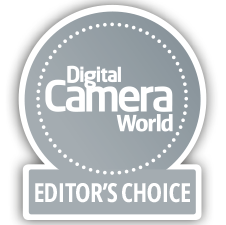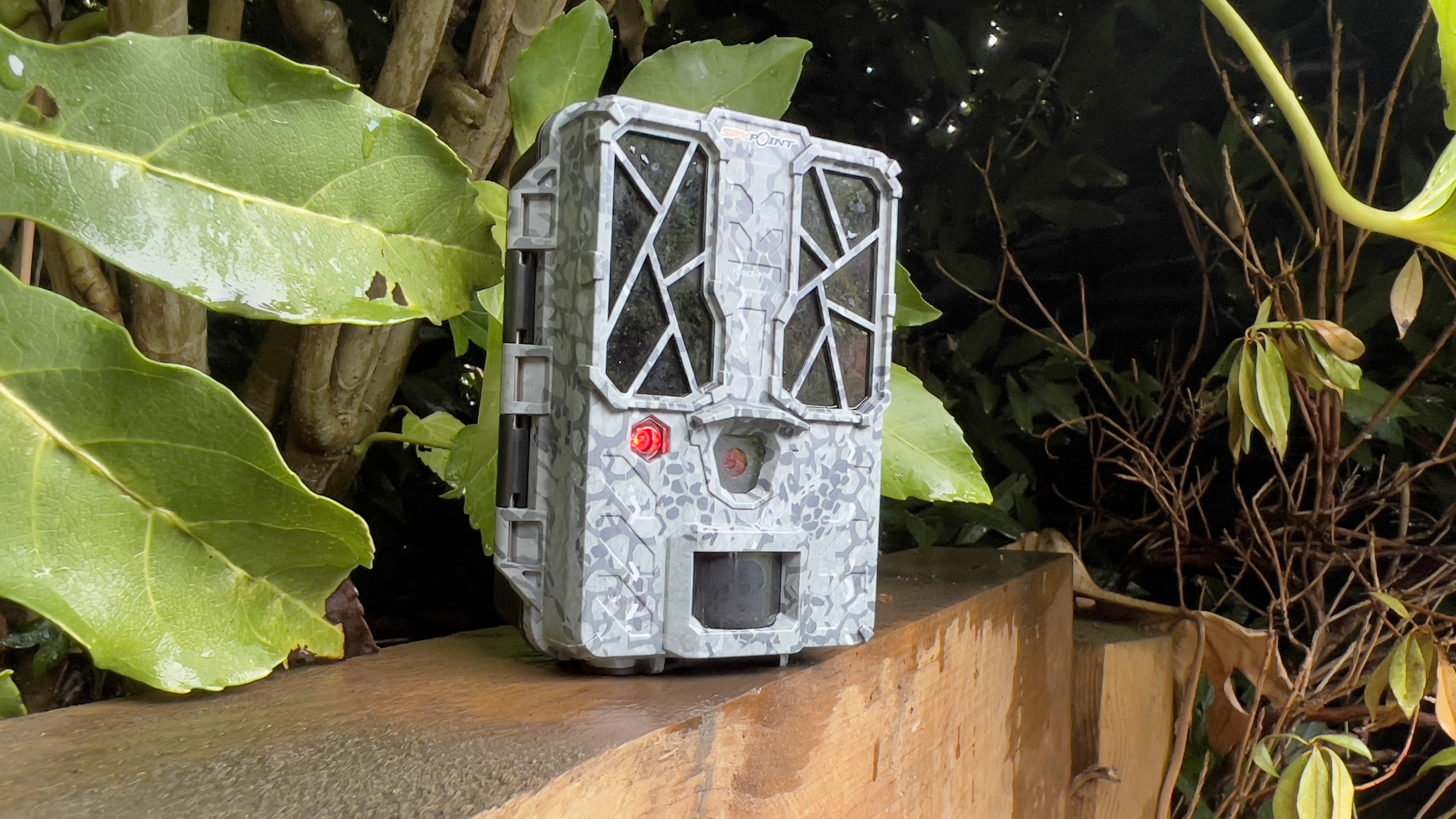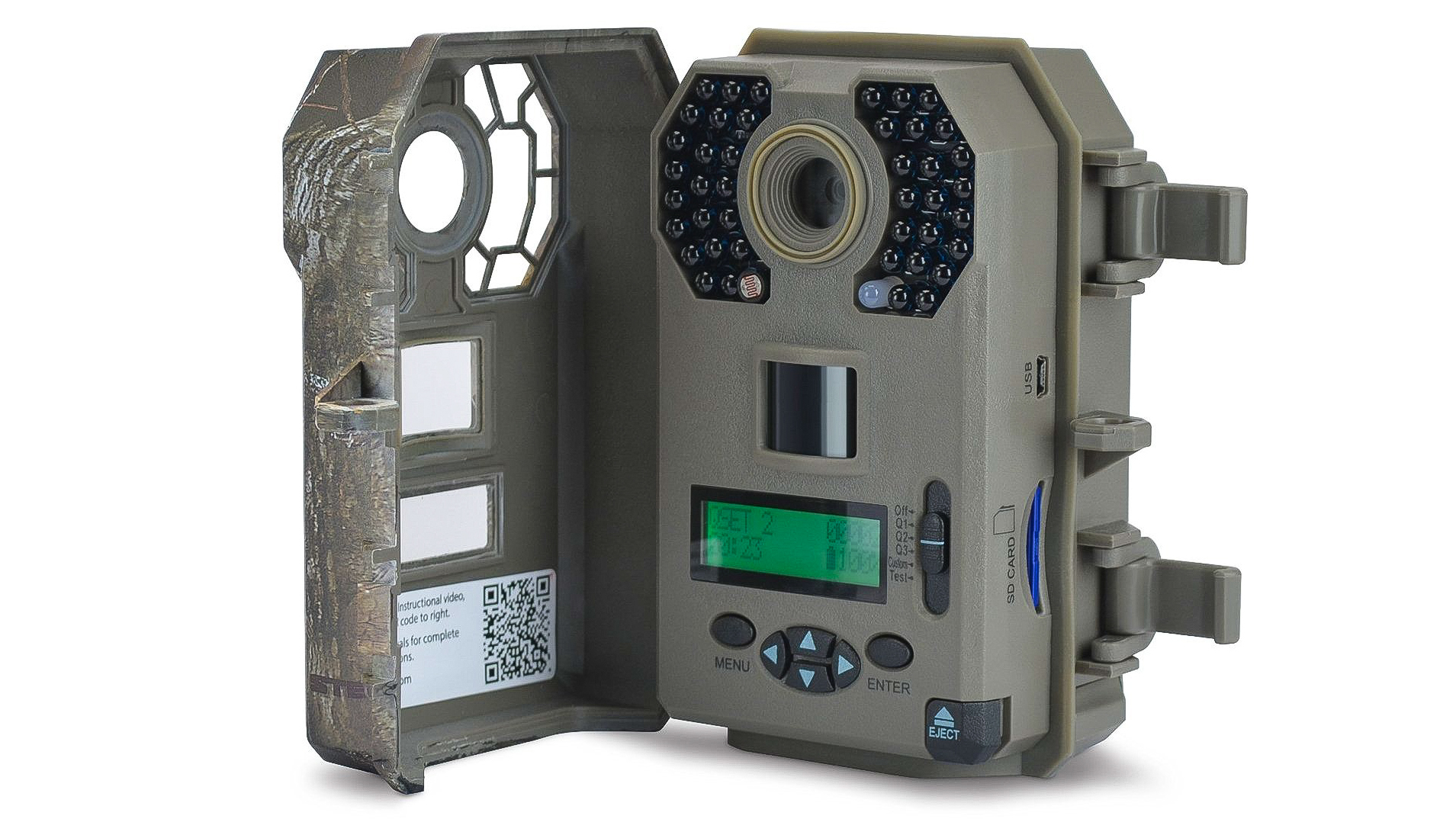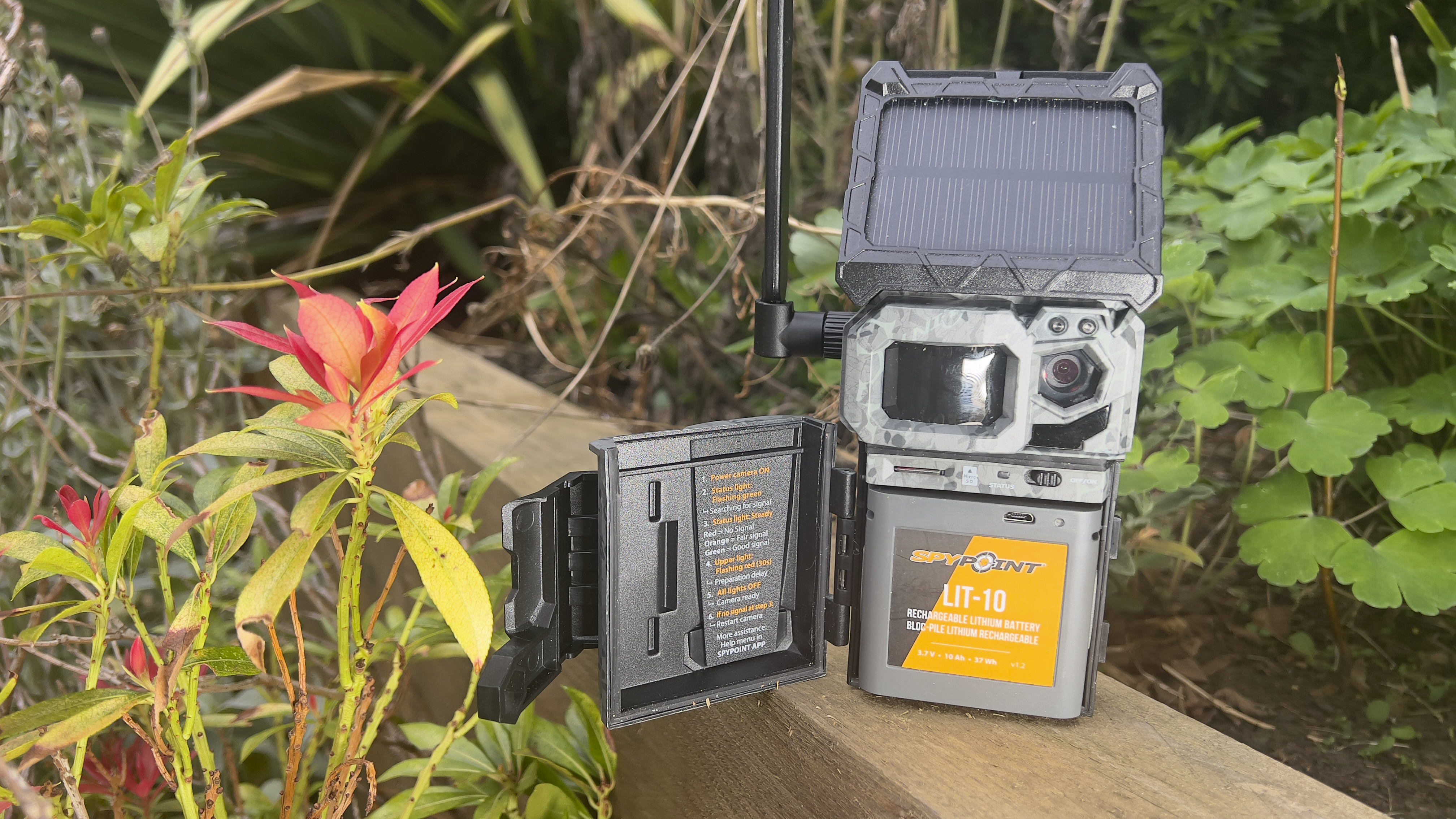The best trail camera in 2025: for wildlife photography and nature watching
Expert guide to the best trail cameras, tested to help you to track and photograph wildlife remotely, day or night

After testing a stack of trail cameras - or camera traps, if you prefer - I’ve picked out the best options for every budget. These motion-and heat-triggered units are designed to live outdoors, quietly recording wildlife without human presence, day or night.
The top models are tough, weather-sealed, and built to shrug off rain, snow, and temperature swings. We prioritise robust construction and camo finishes that help them melt into the landscape. Hunters may call them “game cameras,” but the job is identical: capture natural behaviour without disturbance.
Where a wildlife photographer relies on long glass and quick reactions, a trail camera takes the slow, patient route. You set it, leave it for days or weeks, and let passing animals tell the story. They’re invaluable for hunters, conservationists, researchers, and anyone curious about what roams after dark.
Battery life is pivotal. Some cameras sip power from standard AAs, others use rechargeable packs, and a growing number support solar panels for near-set-and-forget operation. In this guide, you’ll find today’s standout picks, from affordable starters to feature-rich cellular models that send images straight to your phone. Unsure what matters most? Jump to the buying guide for clear, practical tips on choosing the right one.

With over 20 years of expertise as a tech journalist, Adam brings a wealth of knowledge across a vast number of product categories, including timelapse cameras, home security cameras, NVR cameras, photography books, webcams, 3D printers and 3D scanners, borescopes, radar detectors… and, above all, drones.
Best trail camera: our top picks

The Bushnell Core DS-4K No Glow is the best trail camera overall for most people, not least because it has lovely 4K videos, beating many.

The Spypoint Force-Pro is relatively expensive but it does enable you to capture great-looking footage at a whopping 4K resolution (or 30 MP stills).
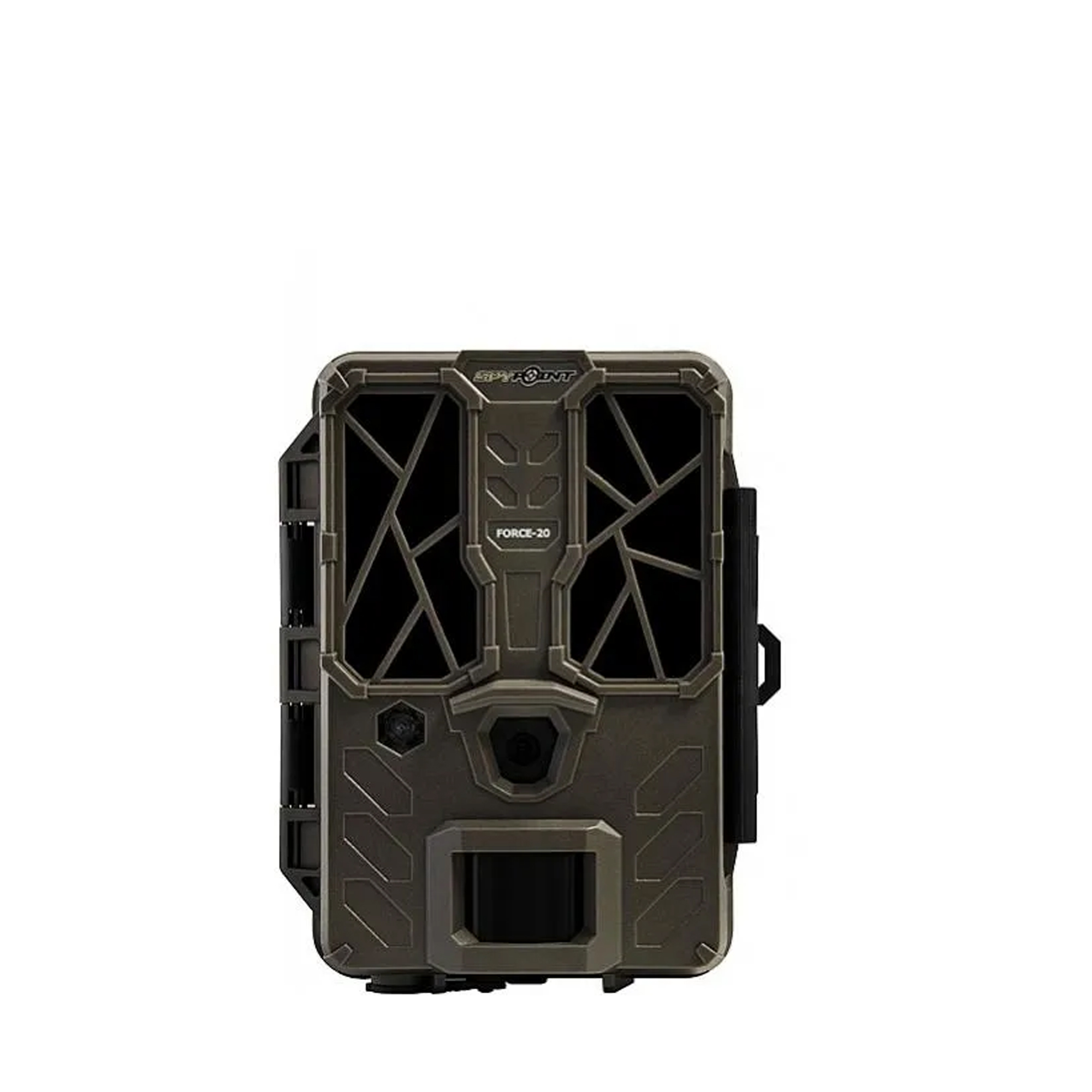
Our top recommendation for a mid-priced trail camera is the Spypoint Force-20 trail camera which offers great features at an affordable price

32MP stills and 4K videos make the Stealth Cam DS4K Ultimate a competent contender for covert observation for beginners.

Not the top spec, but if you're just getting started the 10MP stills and HD video will still give you a good eye on remote locations for less.

Controllable via the Spypoint app, comes packaged with a preactivated SIM card to transfer photos straight from the camera to your phone and charges with solar.
The best trail cameras
Why you can trust Digital Camera World
The best trail camera overall
Specifications
Reasons to buy
Reasons to avoid
✅ You want video night and day: The dual camera system handles this.
✅ You want to leave a long time: You can use large memory cards
❌ You want a large monitor: You won't use it long, but the screen is tiny at 1.5-inches.
We think the Bushnell Core DS-4K No Glow is the best trail camera overall for most people. The clever touch is the fact that it includes dual sensors, one for the day and one for the night. The day sensor prioritizes sharpness and vivid color, while the night sensor focuses on high-contrast clarity, and promises clear images at distances of up to 110ft in the dark.
Our only issue when testing was that the screen could have been slightly bigger than 1.5 inches, but this isn't something you need to use much so we will let that slide.
This trail camera is built to survive inclement weather, and its 'No Glow' LED lights are just that, meaning that wildlife won't be put off by them. It can capture 4K video (or Full HD video at up to 60p), with audio too, and having 32MP at your disposal with a trigger time of 0.2 seconds pretty much seals the deal. In short, this is everything you need a trail camera to be.
Read our Bushnell Core DS-4K No Glow trail camera review
Features | Great to have dual cameras, and a built-in screen (however small) for setup is handy | ★★★★ |
Design | Separate cover for controls and 6 batteries, striking camo | ★★★★★ |
Performance | Images look like video grabs, but video is good | ★★★★ |
Value | Not the cheapest, but capturing true 30fps video is good | ★★★★ |
The best trail camera for 4K night and day
Specifications
Reasons to buy
Reasons to avoid
✅ You want simple controls: The LCD control doesn't allow playback, but is simple.
✅ You want good resolution: Video is 4K and the stills are 30MP (and captures can be in sequence).
❌ You want solar battery charging: You'll have to rely on the batteries you put there at the start!
The Spypoint Force-Pro might seem a bit pricey given the features, but it's worth every penny for the image quality. I've been able to capture stunning footage in glorious 4K resolution, not to mention some breathtaking 30 MP stills. Setting it up is a breeze with its straightforward LCD menu, and within minutes, I'm ready to record all the animal action, day or night.
During my testing, I noticed it doesn't come with a solar panel like the Solar Dark, which is in a similar price range. However, when it comes to the quality of clips, the Force-Pro blows the competition out of the water.
Sure, you'll need to grab some batteries for it, unlike the Solar Dark with its built-in rechargeable battery powered by solar energy. But trust me, the footage you get from the Force-Pro is leagues ahead, earning it an extra star in my book and a wholehearted recommendation. It's hands down the most powerful Spypoint trail camera out there. It's also true that solar doesn't work in every location!
Read our Spypoint Force-Pro trail camera review for more details
Features | 4K clip recording/30MP pics, grayscale LCD menu. Videos can features phases of moon. | ★★★ |
Design | Sturdy, with simple buttons and LCD inside water resistant closing door. | ★★★★★ |
Performance | Very good image quality in light and dark. | ★★★★★ |
Value | You can get solar-charging for the same money, but the image quality is high. | ★★★★ |
The best trail camera for a mid-range price
Specifications
Reasons to buy
Reasons to avoid
✅ You want a LCD monitor: Though small, there is an LCD to help with the setup.
✅ You want on-video data: Moon phases icons as well as date and time appear on clips.
❌ You want the highest resolution: 20MP isn't too bad, but there are sharper options.
This is our top recommendation for a mid-priced trail camera is the Spypoint Force-20 trail camera. OK, 'mid-price' isn't something anyone ever consciously looks for, but it's all about sense. You don't want to cut too many corners, but you don't want to spend too much. I understand!
With quite an affordable price tag, you get a built-in 20-megapixel camera and the ability to illuminate night-time subjects without unduly distracting them – thanks to what are described as 48 ‘super low glow’ LEDs.
What makes it 'mid-range' is the inclusion of an LED display (though a small one, at 1.5-inches) which makes for an easier setup experience than budget models. We found it took decent images and clips and liked the fact that data was included on the footage (including an icon for moon phase).
Video is a high definition 1280x720 pixels rather than Full HD, while the motion-activated sensor can register subjects up to 80ft away. And a certain amount of flexibility is offered via the addition of a time-lapse recording mode.
Read our Spypoint Force-20 trail camera review for more details
Features | 1.5-inch LCD and 48-LED illumination | ★★★★ |
Design | Straightforward cammo color blends into trees and woody environments | ★★★★★ |
Performance | Video resoltuon at 720P is a bit of a disappointment, but stills are a good 20MP | ★★★ |
Value | If you don't mind the limited resolution, the setup features make this good value | ★★★★ |
The best trail camera for beginners

Specifications
Reasons to buy
Reasons to avoid
✅ You want to set up in low-light areas: The back-lit settings screen is easy to set up in deep forests.
✅ You want good camouflage: The case design is suitably organic and blends in.
❌ You don't love buying batteries: You'll need to fork out for 12 AA batteries every time!
With up to 32-megapixel stills combined with up to 4K videos at 30fps, the Stealth Cam DS4K Ultimate is a capable contender for covert observation and great for beginners. It has a rugged, hard plastic shell with a rubberized inner that protects the camera element, and the operation is as straightforward or customized as you need it.
You can set up the camera to be always on, choose certain times of the day or night for it to be operational, as well as alter the resolution of stills or tweak the duration of any video, as well as selecting capture with the audio or without.
Add in the ability for time-lapse operation and the automatic enhancement of images while reducing blur – an issue if capturing subjects in motion in complete darkness – and we have to say this is one of the most comprehensive feature sets to be currently found on a trail camera in its price bracket.
Gavin, the DCW reviewer who tested the camera, did feel that it "looks like something that fell out of the ugly tree," but looks are subjective and I tend to think that's just good camouflage design! He also appreciated the option of 12v external power.
Read our full review of the Stealth Cam DS4K Ultimate
Features | Decent controls with a simply but clear matrix display make getting the camera going easy for first timers | ★★★★ |
Design | Love it or hate it casing, but good sturdy weatherproof seal survived our tests | ★★★★ |
Performance | No arguments with the resolution, though perhaps 'Ultimate' is a claim too far! | ★★★★ |
Value | Great for beginners, with tripod thread and tree strap covering all bases | ★★★★ |
The best budget trail camera
5. Stealth Cam G42NG
Specifications
Reasons to buy
Reasons to avoid
✅ You want an affordable option: It's good value.
✅ You can provide external 12v: At this price you can still provide external power.
❌ You want maximum resolution: With 10MP stills as the max (and lower available), other devices can beat this!
If you're getting started with trail cameras, you'll love this affordable entry-level model from US brand Stealth Cam. It offers a 10-megapixel stills option – you can also opt for 8MP, 4MP or 2MP shots from the unit – plus HD quality video with between and five and 180 seconds of audio.
With a respectable trigger response time of 0.5 seconds, there is a backlit LCD for making selections from the camera’s menu, plus a 16:9 image ratio. As with competitors, ‘no glo’ (hence the ‘NG’ suffix) infrared flash can illuminate subjects up to 100ft away, while this camera purports to offer advanced blur reduction.
Usefully, there is an external power jack for operation via a 12v battery; otherwise power comes courtesy of 8x AAs. Durable weatherproofed housing is a must, and thankfully included here.
We also appreciated that you can get double packs of this camera and save even more money.
Features | Range of options for clip size and the like – limits to be expected at this budget | ★★★ |
Design | Rubbery buttons a little small, but very practical | ★★★★ |
Performance | At half a second, the response time is 'Meh' | ★★★ |
Value | Sensible price and bundles make this good for multi-cam deployments | ★★★★ |
Best with cellular
Specifications
Reasons to buy
Reasons to avoid
✅ You want solar charging: Because it can!
✅ You want images straight to your phone: It sends them over cellular.
❌ You want movie clips: It only takes stills.
❌ You want no worries about charges: Exceed 100 pics over LTE a month and you'll need to pay.
The Spypoint Link-Micro-S-LTE has some key advantages over some of the other trail cameras in the Spypoint range, as it can send images via cellular connection like the best cellular trail cameras.
We loved being able to transmit photos of wildlife straight to our smartphones, moments after they were captured. Thanks to the solar panel, you also don’t have to keep relying on AA batteries, and this makes it an independent trail camera you can leave alone for days.
The main downside of the Link-Micro-S-LTE is that it can't capture video clips, so if you want to record video this isn't the best trail camera for you. But it is a great choice if you want a trail camera you can leave without worrying about the battery, and you like the idea of having images sent straight to your phone via a cellular connection.
The little Spypoint LINK-MICRO-LTE is a much simpler proposition than many of the other trail cameras on this list. It doesn't shoot video for example, just 10MP stills, though it can do so with an impressive trigger time of 0.5 seconds. You can also set the camera to trigger multiple photos once its infrared system detects motion, allowing you to get a series of images in quick succession.
In an unusual touch, the Spypoint LINK-MICRO-LTE also comes packaged with a preactivated SIM card that can transfer photos straight from the camera to your phone. A little odd perhaps, but a nice addition. It's fully controllable via the Spypoint apps too, letting you properly incorporate your smartphone into your workflow.
Read our full review of the Spypoint Link Micro S LTE
The best solar powered trail camera
Specifications
Reasons to buy
Reasons to avoid
The biggest strength of the Sehmua 4G LTE 3rd Trail Camera is the fact that it has an internal battery that can be topped up by a solar panel, which theoretically saves the expense and time of buying and charging batteries and gives you a low-maintenance camera that will shoot for nights on end – it is a 4 watt panel, however, which barely gave our reviewer 22 hours. A huge factor is the other main feature – cellular connectivity.
This depends very much on the location – the 4G connection is great for checking images via your phone without having to visit the camera, but the more you do it, the more battery you'll use. And the worse the cellular signal, the more power the camera will draw too.
Still, the camera triggers in about 0.2 seconds, and you can choose to record 5, 10, 20 or 30 seconds of HD video when activated. There are three sensitivity options, too, though the UX also offers only two camera choices – high and standard def.
It is a relatively expensive trail camera because of the solar element, and the cost of the camera doesn’t necessarily reflect the quality of the footage that it produces. If power isn't so important to you, you might find the cheaper Spypoint Force-20 to be a more sensible option.
See full review of Sehmua 4G LTE 3rd Trail Camera
The best affordable trail camera with color screen

Specifications
Reasons to buy
Reasons to avoid
The Browning Strike Force HD Pro X is another brick-like trail camera designed for remote surveillance and observation, day and night. While the operational controls are bare bones and require an initial degree of familiarization, the provided screen is, unusually in this price bracket, a color one, which we much appreciated when we tested it.
You need your own SD card (we were impressed to see it can manage up to a 512GB capacity) and six AA batteries to power it. A nice touch is that the battery holder can be ejected from the base without changing the mounting position if needed. The screen can also be used to help with framing as it is external – unusual but appreciated.
Overall it's a good value option for those looking to take their initial steps in the trail camera / remote surveillance world – or those simply wanting an affordable fuss-free device that will do the job.
Read our Browning Strike Force HD Pro X trail camera review for more details
The best for remote work trail camera

Specifications
Reasons to buy
Reasons to avoid
The Bushnell Prime L20 Low Glow is a sturdy plastic trail camera offering an easy-to-use option for those looking to get started with surveillance observation or wildlife watching. The camera offers IPX6 levels of water tightness to protect it against rainfall, and a set of batteries can last up to 12 months of use.
When we tested the camera we found that its black and white nighttime images were good but not astounding, while the daytime images recorded in full color were about the same level. That said, the trail camera can capture an image of something you wouldn’t otherwise be able to record, rather than achieving a crystal clear result that you'd want to hang on your wall.
The remotely activated Bushnell Prime L20 Tan Low Glow is built for use in the great outdoors and comes with the added peace of mind of a two-year warranty. This budget-priced Bushnell option is worthy of recommendation.
Read our Bushnell Prime L20 Low Glow trail camera review for more details
FAQs
What is the difference between a game camera and a trail camera?
These terms are essentially interchangeable. Hunters are more likely to use the term "game cameras," while photographers and scientists typically refer to them as "trail cameras." The term "camera trap" is also used, which can refer to both this type of camera and a device designed to trigger a traditional camera
Which is better, a trail camera or a security camera?
It depends on your needs. While there are similarities, security cameras are typically designed for live recording or alert systems, which aren't necessary for trail cameras. Security cameras are also usually intended to be placed close to a home, often within WiFi range. In contrast, trail cameras are often camouflaged, while most outdoor security cameras featured in our guide are intentionally visible to act as a deterrent.
Do trail cameras work in the dark?
Yes, most trail cameras are equipped with night vision. They use built-in, invisible infrared light to illuminate the subject, typically with a range of 60-80 feet (25 meters). While it's not as fast as high-end night vision goggles, it effectively captures images and stores them on the memory card.
How long should you leave a trail camera?
Many users agree that months at a time is reasonable, especially if animals in the area you are capturing images are easily spooked by the scent you leave. A cellular trail camera means it is possible to leave a camera for long periods and check the images later.
Which is best, trail cameras or hides?
Active wildlife photographers might enjoy getting inside one of the best portable hides for wildlife photography, packing some of the best binoculars, and laying in wait, but a trail camera can outlast even a hardened enthusiast.
What is the best deer bait for trail cameras?
Location is more important than the brand of bait, but a mix of ground and whole chestnuts is a good choice. Try and place it in a route the deer already need to go for camera positioning and place the bait there to slow them in front of the camera.
How to choose the best trail camera
Just like regular cameras, trail cameras with higher megapixel counts will produce images of greater quality and detail. But other specs you want to look out for include the focal length of the lens, as this dictates the field of view. The wider the angle, the more of a scene you'll capture, but this will mean an animal will have to get closer to make for a usable picture.
Another important factor is the trigger time; how fast after detecting something will a trail camera capture an image? With how quickly wildlife moves, every millisecond really does count. It definitely needs to be less than a second, otherwise, all you'll end up with are images of animals' back feet disappearing from the image.
Some trail cameras also have an infrared flash, which illuminates scenes on a wavelength that wildlife won't notice. If you're after nocturnal subjects, this is definitely worth getting.
Don't forget that trail camera aren't designed to be monitored continuously, so don't have high-quality view-finders. Some don't even have screens, which can make menu operation harder but save some cash.
If you're interested in checking the results often, without coming back to the camera – which can disturb wildlife habitats – then look for a cellular trail camera. We can tell you from experience how disappointing it is to miss out on pictures because you leave your scent all over an otherwise promising location.
Many trail cam models can be bought in multi-packs – allowing you to buy two, four, or more trail cameras together at a discount – so that you can monitor several locations simultaneously.
How we test trail cameras
When testing and reviewing trail cameras, we look for good image quality, battery life, power of the night-light, rugged weatherproofing, and user-friendly operation. We also keep an eye on sensor range, camouflage, and options for remote control and image transfer.
We examine the specifications and, where possible, try the cameras out on location in different weather conditions. Given the importance, we also test the true battery life.
There are a lot of factors that can affect battery life that you might not think of, which is why our reviewers perform tests in real-world locations. The main ones are:
- How many times a camera is triggered (more animal visits will use power faster, which is also why it can be useful to have a minimum wait time in the settings)
- Solar power is, by its nature, very dependent on conditions. Some solar panels are easier to direct at the optimum light than others (especially detachable ones).
- Distance radio signal travels / amount transmitted – if your camera has cellular communications, then the further it is positioned from a mast, the more power it will need to communicate. If it is sending larger files, it'll also eat through more power.
The best camera deals, reviews, product advice, and unmissable photography news, direct to your inbox!

With over 20 years of expertise as a tech journalist, Adam brings a wealth of knowledge across a vast number of product categories, including timelapse cameras, home security cameras, NVR cameras, photography books, webcams, 3D printers and 3D scanners, borescopes, radar detectors… and, above all, drones.
Adam is our resident expert on all aspects of camera drones and drone photography, from buying guides on the best choices for aerial photographers of all ability levels to the latest rules and regulations on piloting drones.
He is the author of a number of books including The Complete Guide to Drones, The Smart Smart Home Handbook, 101 Tips for DSLR Video and The Drone Pilot's Handbook.
- Dan M LeePro Travel and Adventure Photographer, Educator and Author

